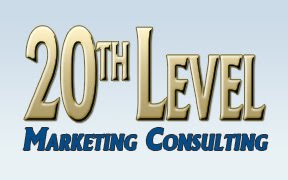I savaged Panasonic pretty good in my last post about the lousy marketing job they've done (so far) with their new handheld. Upon consideration, I think it's instructive to look at what they've done wrong and how it should be done better.
The Product. Let's start with the behind-the-scenes part of the marketing effort, which should have begun well over a year ago... or at least, whenever the product was being considered. Somewhere deep inside Matsushita (the owner of the Panasonic brand), some bright boy (it's a Japanese company, odds are it's a male engineer) had an idea for a handheld device. It was probably an engineer, rather than a marketer, as Matsushita is a typical engineering-driven tech company. Perhaps a prototype was cobbled together, or at least a specification list and some rough drawings. At this point Matsushita had to decide whether or not to move forward with this product idea. What should have been done before making this decision was to bring in Marketing to figure out what the audience for such a device might be, and how many Matsushita might be expected to sell. Ideally some user surveys might be consulted. A competitive analysis would be done; what are the direct competitors to the product? (The DS line, PSP, iPhone, etc.) How many do the competitors sell? How can the product be positioned against the competitors? All of which leads to a sales and profitability estimate (which really should be a range, given uncertainties), which should inform the decision about whether or not to proceed.
Sometimes you do go ahead even if the product doesn't look like a moneymaker, because it's useful for strategic reasons. (Example: The Prius didn't turn a profit for many years, but it helped Toyota's brand immensely as a technology leader.) Usually some changes would be made to the product based on the marketing analysis (it needs more RAM, a sleeker design, compatibility with some technical standard... whatever).
The Launch. Once you've decided to go ahead with the product, you plan the launch. Usually you look at the production schedule and find out when you can actually have the units, and in what quantities. Then you see what makes sense for a release date given that, and the marketplace. For a gaming device, you'd want to make sure you hit the holiday season with plenty in stock. Working backwards from there, you'd want to start the buzz building well in advance to help generate retailer preorders. The counter-argument to releasing info far in advance is that it gives your competition time to arrange countermeasures (like introducing their own new widget, or lowering prices, or bundling software, or other things). Usually you'd want to start showing off the device in January at CES (especially if you have little or no track record as a hardware company in the gaming industry), then provide details of the device and the ship date and the starting software lineup by E3, so you can book orders for your October/November launch (you absolutely need to be in stores by Thanksgiving).
January is when you'd release key info about the device, particularly why it's better than the competition. You need at least some key details for the fans to slaver over. Importantly, you need to line up software support big time, and announce them as early as you can. Specific titles are even better; they validate the machine. If EA says Madden will be on it, that's validation of reality. Support from major publishers is essential if you want to be seen as real; if you don't have that, you'd better offer something incredibly compelling if you're launching as a gaming device.
You also need a trademarkable name that's recognizable and suggests the key selling points of the device (the ones you identified in your product plan). Plus a PR strategy that will get buzz building at magazines and web sites. An incredible convention presence to drive home your messages. Maybe an Alternate Reality Game to get buzz going. Some high-profile celebrity endorsers. An amazing web site that has key info, dates, constant information updates.
Compare all that to what The Jungle has... it makes you wonder why they are wasting their time and money. Look, the hardware could be amazing for multiple reasons, but I don't know. Neither do you. Because they haven't said anything about it. A scrap of data or two would be enough to get the buzz started; say "The screen resolution is better than an iPhone 4" or "The CPU runs rings around any other handheld" or "Jane Famousperson says it's the most revolutionary thing she's ever seen in gaming." Instead, we get a German Flash game company with a CGI movie suggesting it is part of a game, and an animated talk show. And no data.
I've only scratched the surface here, but this should give you a better idea of just what's wrong with this product launch.
The Rise of Airt
20 hours ago






No comments:
Post a Comment